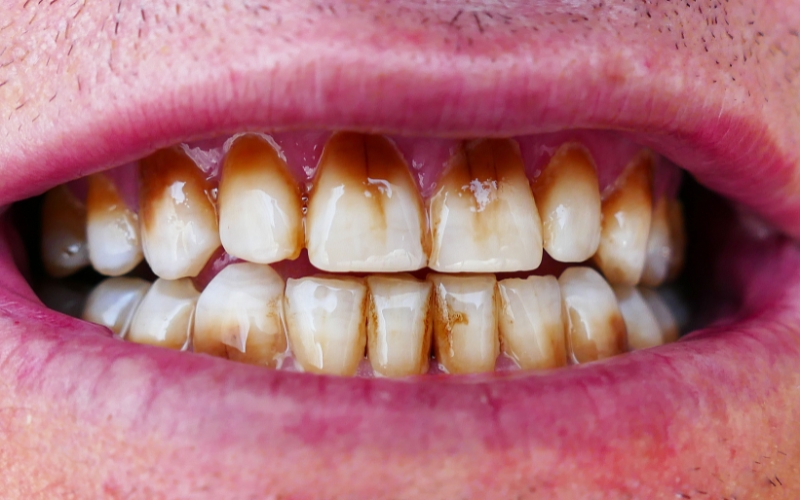3609 Jamison Way Castro Valley, CA 94546

A bump on the roof of your mouth can manifest as a small blister, cyst, or firm lump that you may detect with your tongue or finger. It might be painless or tender. Various factors, such as mouth sores, bony growths, or infections, can contribute to the development of a bump on the roof of the mouth.
In most cases, these bumps are harmless and may resolve on their own, either with or without intervention. However, if a bump persists or worsens over several weeks, it could signal a more serious underlying condition, such as oral cancer, although such instances are rare.
This article explores the potential symptoms associated with a bump on the roof of the mouth, its possible causes, and indications that prompt seeking evaluation from a healthcare professional.
1. Mucocele:
Mucoceles are benign cysts that form when saliva glands become blocked or damaged, leading to a fluid-filled sac. They often appear as small, translucent bumps on the roof of the mouth and may rupture spontaneously. While mucoceles typically resolve on their own, persistent or recurrent cases may require intervention from a general dentist.
2. Palatal Torus:
Palatal tori are bony growths that develop on the roof of the mouth, usually near the midline. They are benign and often asymptomatic but can cause discomfort if they interfere with eating or speaking. In severe cases, surgical removal may be necessary, although it’s not typically recommended unless symptoms are severe.
3. Oral Thrush:
Oral thrush, or oral candidiasis, is a fungal infection caused by an overgrowth of Candida yeast in the mouth. It can lead to the development of white patches or bumps on the roof of the mouth, along with other symptoms such as soreness and difficulty swallowing. Treatment typically involves antifungal medications prescribed by a healthcare professional.
4. Oral Cancer:
While less common, bumps on the roof of the mouth can sometimes indicate oral cancer. These growths may appear as red or white patches, ulcers, or lumps that fail to heal. If you notice any suspicious changes in your oral tissues, it’s essential to seek prompt evaluation from a general dentist or oral healthcare provider.
5. Traumatic Injury:
Accidental trauma, such as biting the roof of the mouth or experiencing a blow to the face, can result in the formation of bumps or lesions. While most injuries heal on their own, persistent or severe cases may require professional assessment and treatment to prevent complications.
6. Oral Herpes:
Herpes simplex virus (HSV) infections can cause cold sores or fever blisters to develop on the lips, gums, or roof of the mouth. These sores may be accompanied by pain, tingling, or itching and tend to recur periodically. While there is no cure for oral herpes, antiviral medications can help manage symptoms and reduce the frequency of outbreaks.
7. Allergic Reaction:
In some cases, bumps on the roof of the mouth may result from an allergic reaction to certain foods, medications, or oral care products. Common allergens include nuts, shellfish, antibiotics, and ingredients found in toothpaste or mouthwash. Avoiding triggers and seeking medical advice can help prevent future reactions.
8. Oral Lichen Planus:
Oral lichen planus is a chronic inflammatory condition that can affect the mucous membranes inside the mouth, including the roof of the mouth. It may present as white, lacy patches or raised bumps and can cause discomfort or burning sensations. While there is no cure for lichen planus, treatments such as topical corticosteroids can help manage symptoms.
9. Canker Sores:
Canker sores, also known as aphthous ulcers, are shallow, painful lesions that can develop on the roof of the mouth, as well as other areas inside the mouth. While the exact cause is unknown, factors such as stress, injury, and certain foods may trigger their formation. Over-the-counter remedies and lifestyle modifications can help alleviate symptoms and promote healing.
10. Salivary Gland Stones:
Salivary gland stones, or sialoliths, are calcified deposits that can obstruct the flow of saliva from the salivary glands into the mouth. When these stones become lodged in the ducts of the minor salivary glands on the roof of the mouth, they can cause swelling, tenderness, and the formation of bumps. Treatment may involve gland massage, hydration, or surgical removal.
A bump on the roof of the mouth can stem from various causes, ranging from benign cysts and bony growths to more serious conditions like oral cancer. While some bumps may resolve on their own or with home remedies, others may require professional evaluation and treatment from a general dentist. If you’re experiencing persistent or concerning symptoms, don’t hesitate to schedule an appointment with your dentist for proper diagnosis and management. Remember, early detection and intervention are key to maintaining optimal oral health and overall well-being.




